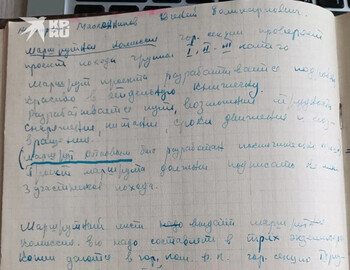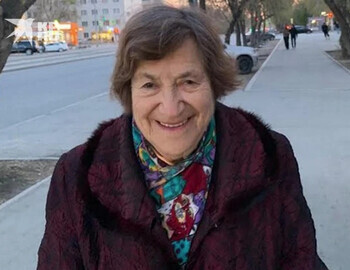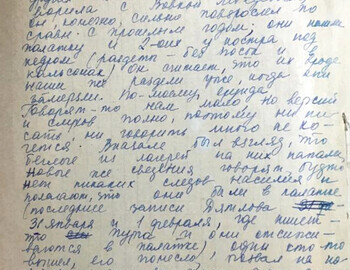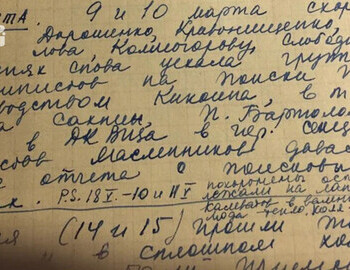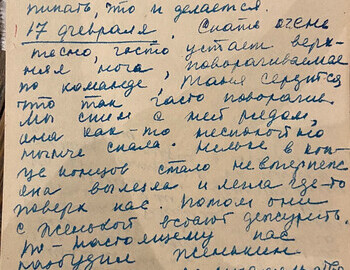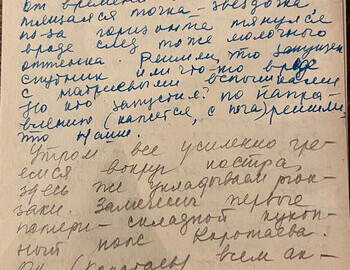
The reason for the death of tourists could be a mysterious flash
Publishing for the first time diaries of friends of the dead hikers from the Dyatlov group
Feb 1, 2023. All rights reserved Komsomolskaya Pravda. Authors Nikolay Varsegov and Natalya Varsegova
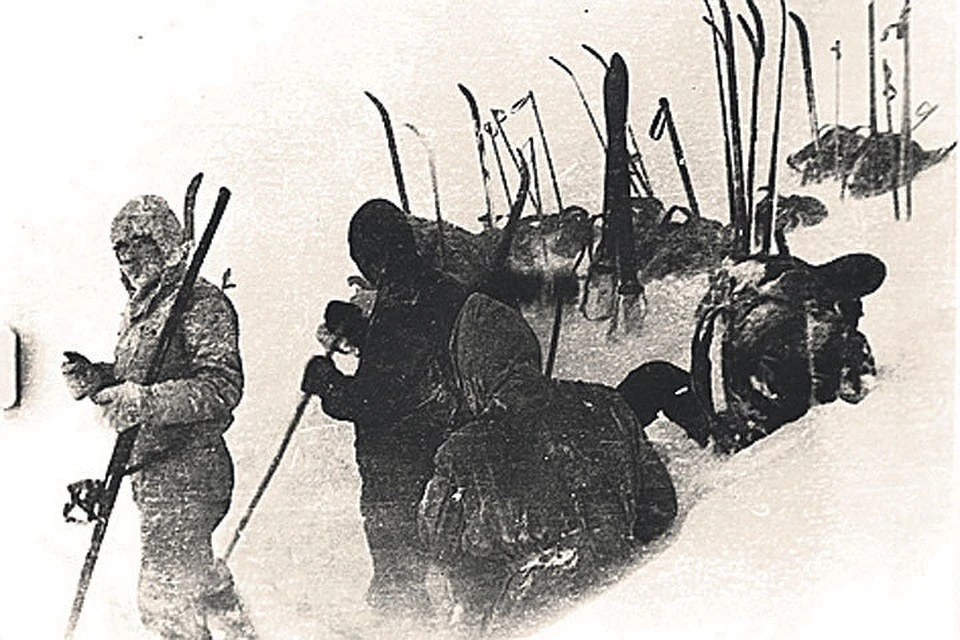
A group of nine led by Igor Dyatlov went to the Northern Urals and never came back.
This story has not left anyone indifferent for more than 60 years. In the winter of 1959 in the mountains of the Northern Urals nine hikers went missing: fifth-year student of the Ural Polytechnic Institute (UPI), head of the group Igor Dyatlov, as well as Yuri Krivonischenko, Yuri Doroshenko, Rustem Slobodin, Zinaida Kolmogorova, Lyudmila Dubinina, Aleksander Kolevatov, Nikolay Thibeaux-Brignolle and Semyon Zolotaryov. For 16 days, the participants in the trek had to ski in the north of the Sverdlovsk region for at least 300 km and climb two peaks in the Northern Urals. The expedition was of the third (highest) category of difficulty.
A month later, rescuers found the empty tent of the hikers... And five frozen bodies within a radius of one and a half kilometers from the tent. The bodies of the rest were found only in May. Almost all the hikers had no shoes and were half-dressed. Some had fatal injuries. According to investigators, the hikers died on the night of February 1-2. But it has not yet been figured out why the hikers ran fled from the tent into the bitter cold and to their death. Because of that many different versions of the tragedy have appeared in our time:
- natural (avalanche, hurricane и т.д.),
- technogenic (failed missile test, weapons и т.д.),
- criminal (murder by fugitives, American spies, black gold diggers и т.д.),
- mystical (Yeti, UFO etc).
Komsomolskaya Pravda has been investigating this story for a long time. We find more and more witnesses to that drama. Today, for the first time, we are publishing diary entries and video conversations with members of the UPI hiking club, who added very interesting details to our investigation.
Ada Grat
In the archives of Ada Grat, only one notebook from that time has been preserved. And it contains notes from the meeting of the hiking section, which Maslennikov conducted. It can be seen from them that the hikers were told anew about the rules of hiking ... Instructor Maslennikov made a special emphasis on the deadlines for returning from the route (in the photo - a page from the diary of Ada Grat).
It was difficult to get into the Dyatlov group
Ada Mihaylovna Grat was 28 years old in 1959. She worked at a shoe factory in Sverdlovsk, was a member of the UPI hiking section, and also a freelance correspondent for the Soviet Sport newspaper. Ada Mihaylovna was very worried when her friends died so tragically and wrote down in a notebook all the details associated with the events. Unfortunately, due to relocating, some of the manuscripts were lost. We showed the video recording of the interview to expert profilers (specialists in lies) and they confirmed that our interlocutor did not try to compose something, she really tried to remember everything she could, although she sometimes confused names and dates. Ada Mihaylovna remembered the tragedy with the Dyatlov group for the rest of her life.
- In the 1950s weekend treks were very popular in our country - recalls Ada Mihaylovna. - In the spring of 1954, UPI student Yury Krivonischenko came to us at the Uralobuv (Uralshoes) factory. He told us about the hikes, gathered a group of those who wished and led them along the route. Then I often went on these exciting treks. I wrote an essay and offered it to the Soviet Sport newspaper. They published it and asked me to write more. So I became their freelance correspondent. And somehow there was a rumor in the hiking section that an experienced mountaineer Igor Dyatlov was gathering a group for a hike. It was difficult to get admitted, he took only seasoned ones. But then a certain Zolotaryov joined out of nowhere...
Let us explain to readers that the appearance of Semyon Zolotaryov in the hiking section of the UPI raised questions for many, both then and now. For 20-year-old students, a 37-year-old war veteran, holder of the Order of the Red Star, was not a very suitable participant. In addition, no one knew him in the Urals, he came from the North Caucasus.
- They did not want to take him, - continues Ada Grat. - I asked - why? The guys answered that none of them had ever gone hiking with him. However, for some reason, Dyatlov took the stranger Zolotaryov on the expedition...
A couple more words about Semyon Zolotaryov. His biography is no less mysterious than the story of the death of the group. His profiles, written by him, differ from real documents and facts, starting from the date of birth. He wrote everywhere that he was born on February 2, 1921, but the registry where he was born says March 1, 1921. In the party registration card, he lists some places of military service, and other data in the archive of the Ministry of Defense. There are also many differences in post-war life. There is an opinion that Semyon Zolotaryov was an employee of the special services, and went on the expedition with Dyatlov on assignment. It is also strange that when leaving the Caucasus, he said to his acquaintances: "The whole world will talk about this expedition." All these facts lead many researchers to think: did Semyon had anything to do with the demise of the group?
- I remember another moment - there was a rumor about the return of Yuri Yudin from the trek, - says Ada Mihaylovna. - Allegedly he ran for boiling water, twisted his leg and could not go further. The rest of the guys went on without him.
Grat's next memory is associated with the traditional all-Union gathering of the hikers on the border of Europe and Asia, which is 40 km from Sverdlovsk (now Yekaterinburg). According to her, it took place on the first Sunday of February with the active support of trade unions, which bought equipment for their participants, allocated money for food and even organized transport.
- On this day in 1959, heavy sleet was falling in the morning, - says Ada Mihaylovna. You can’t see anything, everything is shrouded in a veil of snow. We even doubted whether to go to the rally or not. But still went. There was no visibility in the forest, we weer hearing only voices. "Wath a weather! What are the Dyatlov group doing now? They should have sent a radiogram yesterday." Another voice - "They still have time, let's wait and see."
The issue with the radiogram is controversial. If you believe the statements about the rally on the first Sunday of February, it was just February 1 - too early for a radiogram about the end of the trek.
The tent was found from the air
On January 23, 1959, the Dyatlov group left Sverdlovsk for the Northern Urals. On February 12, the guys had to give a telegram to the hiking club that they were at the end point - in the village of Vizhay. But there was no news. The search began on the 20th of February. And on February 26, they found the empty tent of the group...
- There was a decision not to send more people to the search, says Grat. But rumors spread quickly. They immediately started talking that they saw a tent from a helicopter, but there were no people. In those days, everyone was stunned by the news about the disappearance of the guys. Everyone asked the question - what happened? There is a tent, there are no people. Then there was a message that a military detachment was sent with probes, probes (long iron bayonets to search for people under the snow - Auth.). In April, they said that they had found some of the guys, but it was impossible to recognize them.
And again evidence that the tent was found from the air. In the book "1079" by Igor Pavlov and Teodora Hadjiyska, there is the following paragraph: "there are recollections to the effect that it was specifically discovered by the pilots. We are not taking into consideration the account of Victor Vasilyevich Potyazhenko that it was he who had spotted the tent. “When we were taking off while accelerating to the speed and gaining height, I saw something below – looking like a tent. I pointed it to Ortyukov – have a look! He shook his head… saying, we will take a look tomorrow.” No doubt, Potyazhenko might see the tent during the takeoff on return to Ivdel, however, Slobtsov and Sharavin had discovered it a day before Potyazhenko appeared at height 1079. Emil Bachurin, who at the time of the search for the group worked as a cook and a stoker at the intermediate base of the Northern expedition, mentioned that "in the winter of 1959, the corpses of several people and abandoned tents were discovered on the eastern slope of Mt. Otorten from a helicopter, which was making a special flight to one of the parties of the northern expedition." Vsevolod Poluyanov, a 1954 graduate of the UPI and a well-known Ural hiker, the friend of Bogomolov and Akselrod, recalled: "Finally, we discovered from the helicopter a solitary tent at a bare pass near Mt. Otorten. There were no people anywhere near and around it." Residents told about it as well. According to Georgiy Novokreschenov "……they were discovered from the helicopter. Shreds of the tent were swinging in the wind." In 2004, pilot Georgiy Karpushin, related: "we clearly distinguished a tent, which had stuck to the eastern slope. We fixed the position of the tent on the map and contacted Ivdel."
But the case files, for some reason, is written something else: supposedly, searchers found the tent, walking along the slope of Mt Kholat Syakhl. We think that the talk about the discovery of the tent from the air is still not unfounded.
"Version different than the official"
Versions of the death of the hikers were discussed at a seminar that took place shortly after the tragedy. Grat does not remember who spoke to the audience, but there is evidence that it was the head of the search, master of sports in tourism Evgeniy Maslennikov.
- He said the following, - recalls Ada Mihaylovna, - according to the plan, the guys were supposed to spend the night at the foot of Mt Otorten. But according to the weather report, the temperature there that day was minus 30 and the wind was 25 meters per second. In February, it gets dark early in the Northern Urals, so it is possible that it is already dark at three o'clock in the afternoon. Therefore, the hikers could have gone astray. So they arranged an overnight not where they planned. The girls began to cook dinner, sausage and bread were cut. Others began to change their clothes. But at that moment, they saw a flash. And then the speaker spoke on his own behalf - some of the guys studied at the Physicotechnical Institute and have read about the tests (of an atomic bomb, - Auth.), They immediately understood what kind of flash it was. Instantly jumped out of the tent, who was in what. The flash blinded them. But the hikers knew that they had to go down into the forest. There they all died, freezing, unable to cope with the terrible weather.
Stop! What flash? What is Maslennikov talking about? There was not a word about this in his testimony in the case files. The investigation did not mention any flash. But on the other hand: could the investigator in those years write down the words about the flash in the case? Doubtful. If Ada Mihaylovna does not confuse anything, it means that Evgeniy Polikarpovich had his own version, different from the official one i.e. "the cause of the death of the hikers was an overwhelming force, which they were unable to overcome".
Eva-Tatyana Laufer
Eva-Tatyana Laufer was a student at the Faculty of Civil Engineering of the UPI in 1959. She knew the members of the Dyatlov group well, she studied at the same faculty with Lyuda Dubinina.
"Something the color of the moon"
In February, Iva (as her friends called her) was also on an expedition. They went to the Konzhakovsky stone (Severouralsk - Konzhak - Kytlym - Karpinsk). Iva kept a diary. On February 17, she wrote: "We were awakened by Zhenya’s cry: "Look, a miracle, a miracle!" We ran outside in socks and saw something moving across the sky the color of the moon, some kind of nebula that kept growing, diverging in concentric circles or spheres. In the center, from time to time, a luminous dot flashed, an asterisk, from behind the horizon stretched like a trace, also of a milky hue. We decided that a satellite was launched or something like that with sodium flashes.
There you go, a flash again. How often does it appear in the memoirs of contemporaries of the Dyatlov group incident? But could it be the cause of their death? From this record, we see that even students of the Faculty of Civil Engineering (where most of the guys studied) understood that such a phenomenon is nothing more than the launch of something in the space - a satellite or a rocket.
In addition, these memories coincide with the testimony of Vladislav Karelin, a participant in the search for the Dyatlov group. Here is an excerpt from his testimony: "In connection with the death of the Dyatlov group, we should talk about an unusual celestial phenomenon that we observed on our expedition on February 17, 1959 on the watershed ridges of the Severnaya (Northern) Toshemka and Vizhay rivers. At about 7:30 am Sverdlovsk time, I was awakened by the cry of those on duty who were preparing breakfast: "Guys! Look, look. What a strange phenomenon!" I jumped out of the sleeping bag and out of the tent without shoes in only woolen socks and, standing on some branches on the ground, I saw a large bright spot. It grew. A small star appeared in the center of it, which also began to increase. All this spot moved from the northeast to the southwest felling downwards. Then it disappeared behind a ridge and forest, leaving a bright streak in the sky. This phenomenon produced a different impression on different people: Atmanaki claimed that it seemed to him that the earth would explode from a collision with some planet; to Shevkunov, this phenomenon seemed "not so terrible", it did not make a special impression on me, the fall of a large meteorite and nothing more. The whole thing ended in a little over a minute."
It is now known that it was a missile launch from the Astrakhan Kapustin Yar test site, the trajectory of which lay just above the Urals. But the phenomenon that happened did not frighten the hikers, did not force them to flee half-dressed from their tent. It can be concluded that the flash that Maslennikov spoke of is unlikely to have anything in common with the mysterious fireballs. But what then did the Dyatlov group see on that fateful night?
Dyatlov's last entries were about a snowstorm
However, we will continue to read the diary of Iva Laufer.
"February 27. The horror, we returned from the trek and found out that the Dyatlov group was gone. We were at a loss as to what happened to them. For all hikers this was a nightmare. The organization of expeditions then became stricter - both the approval of routes, and control over fees."
"March 5. The news is reported sparingly. It is known that they found four - Zina, Krivonischenko, Dyatlov, Doroshenko. Yesterday our guys returned - Slobtsov, Brusnitsyn, Lebedev, I don't know others. Today I spoke with Vovka Lebedev. He certainly has matured a lot compared to last year. They found the tent and the two by the fire under the cedar tree, undressed in underwear. He believes that they were stripped by the others when they were already dead. I think it's nonsense. They tell us a little, but there are a lot of versions and rumors. At first they said that it was the fugitives from the camps who attacked them. New information says that there are no signs of violence and it is believed that they were inside the tent. Dyatlov's last entries are on January 31 and February 1, where it is written that there is a blizzard, and they sit out in a tent.
Someone came out, he was carried away, called for help, and they all jumped out to help in what they were, and they were also dragged. And they died, tired, exhausted, frozen (here is clearly a retelling of one of the versions - Auth.). Yes, there were a lot of products in the tent, all documents, eight pairs of boots, and there were nine of them (hikers, - Auth.). And today Vovka said that the stove was not assembled. They set up a tent on a treeless slope, which has a slope of 45 degrees (actually, the slope is no more than 21 degrees - Auth.). And the search goes on with the help of probes that plunge into the snow every half a meter. Still - they are going to bury them there. Vovka explains this by the fact that now they will be thawed for 2 days for tests, and after that it seems impossible to transport them, because they will deteriorate very quickly. In general, the tragedy is unprecedented."
"March 15. On March 9 and 10, Doroshenko, Krivonischenko, Dyatlov, Kolmogorova, and Slobodin were buried. The other day, a group of climbers left again to search under the guidance of Kikoin (a teacher of physics at the UPI, - Auth.). On March 12, at the VIZ Palace of Culture, in the hiking section, Maslennikov gave a kind of report on the search operation (same gathering that Ada Grat was talking about - Auth.)."
"May 18. On May 10 and 11, the rest were buried. They lay on the flooring (aka den covered with branches - ed.). Kolevatov in felt boots, Lyuda is warmly dressed, Kolya (Thibeaux-Brignolle - Auth.) is not."
From the authors
On one hand, we learned some new things from the memories of our interlocutors. On the other hand, a flash, again about how Zolotaryov joined the Dyatlov group, a tent found from the air - all this gives new food for thought. What else is the value of such records? Because they are documentation. Contemporaries of the Dyatlov group are old, and often they are confused in their memories. And the paper keeps everything - how they learned about the tragedy, how they searched, how various versions were discussed at the time. There are interesting details that can bring us closer to solving the mystery. Therefore, we appeal to our readers, if any of you or your friends have records of those times regarding the tragedy, write to us about it.: vars@kp.ru, konata@kp.ru.


